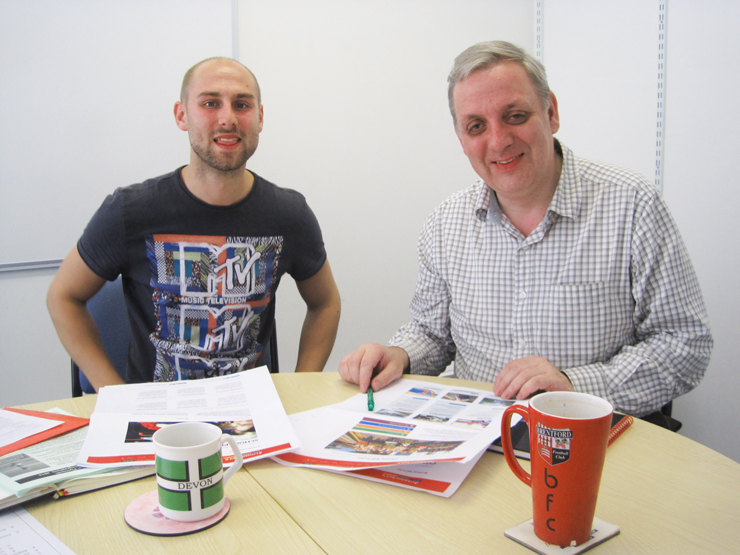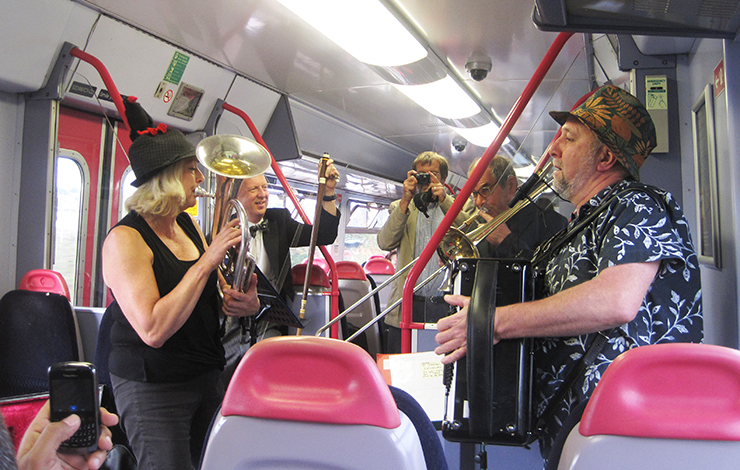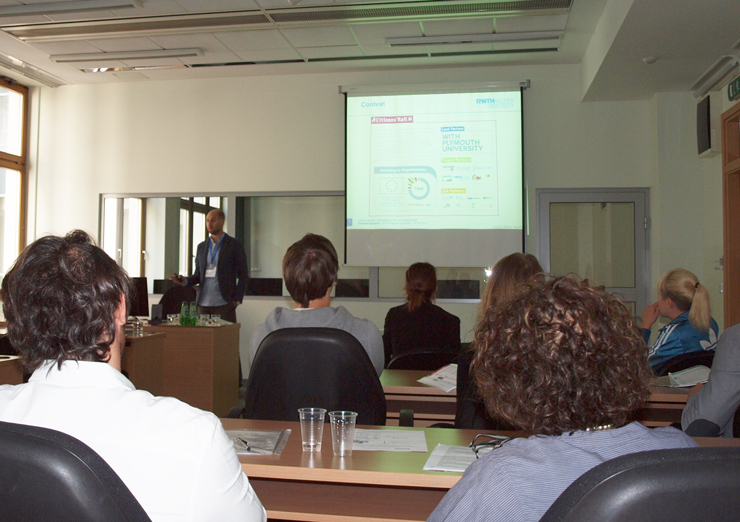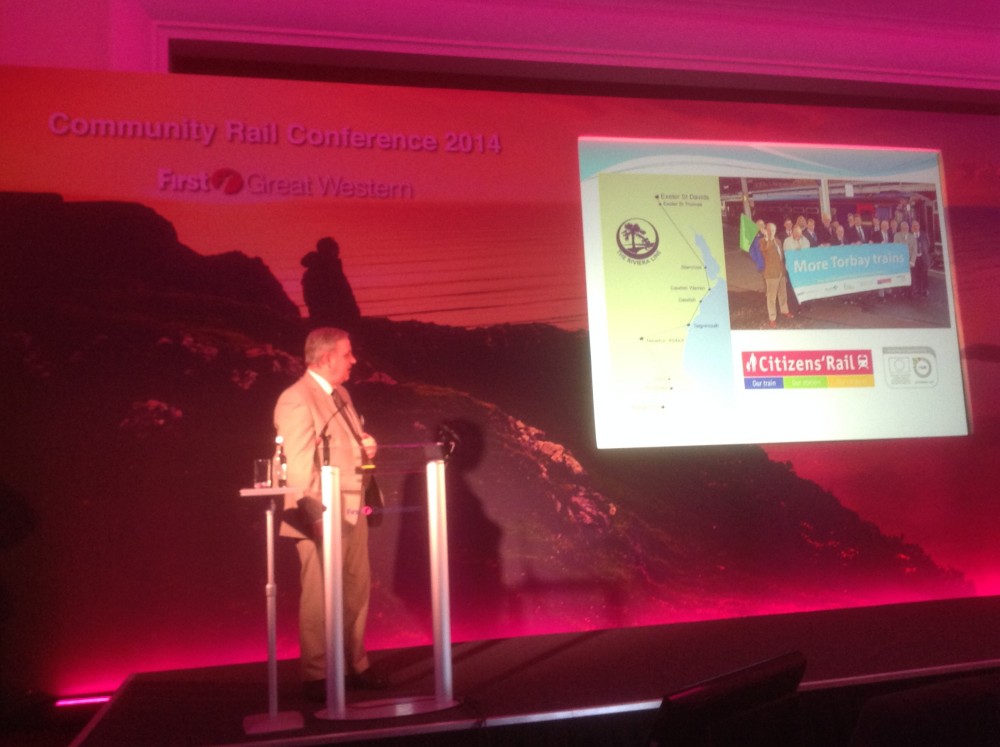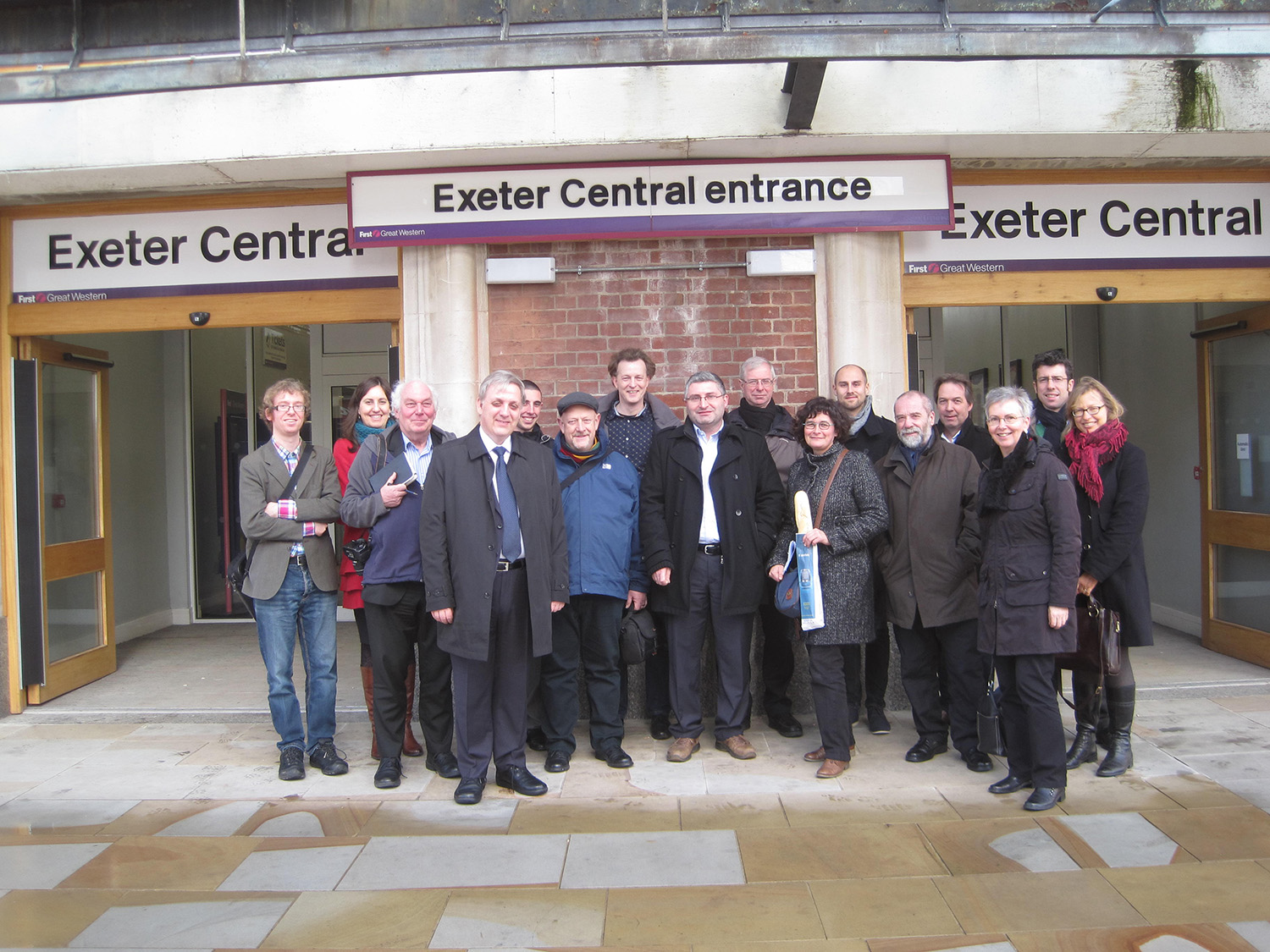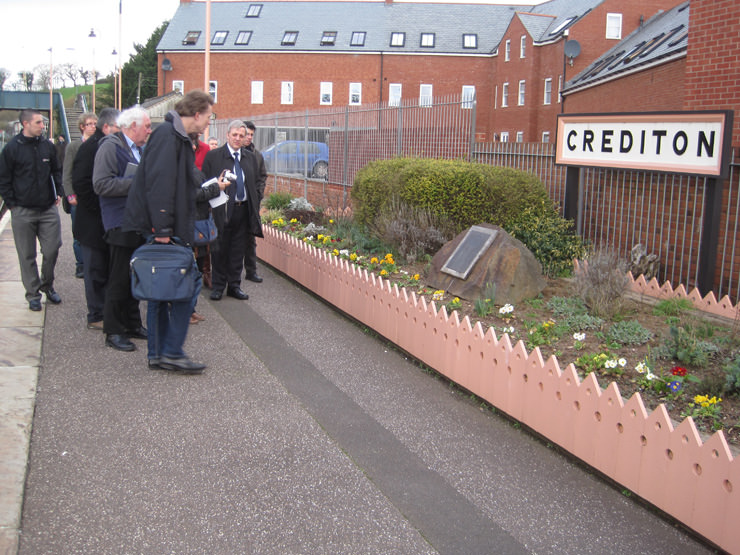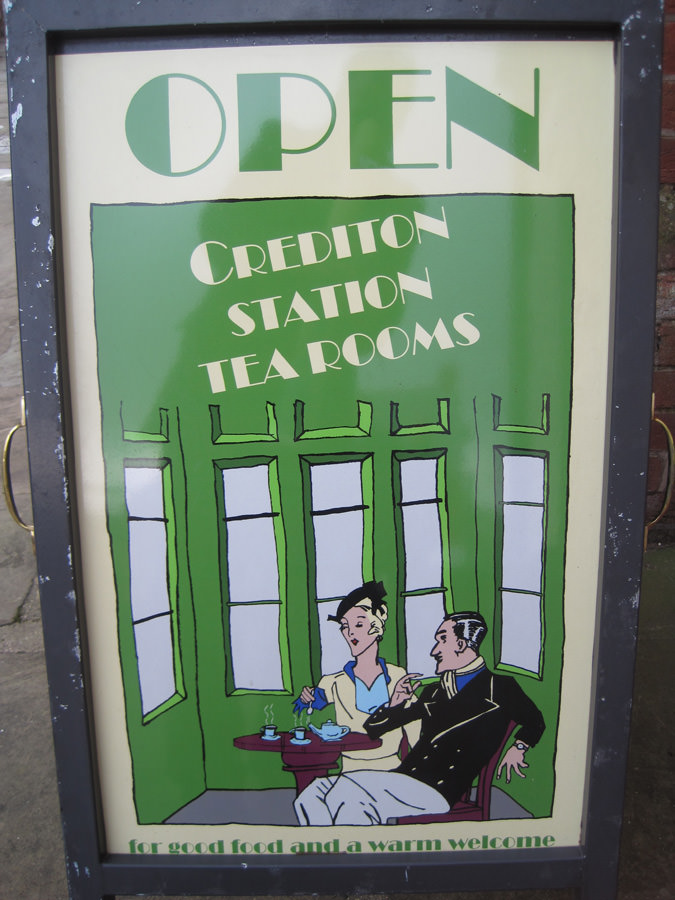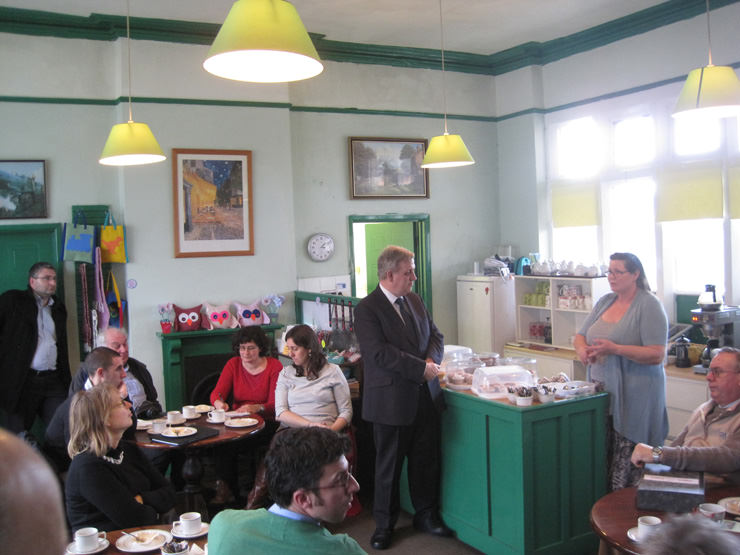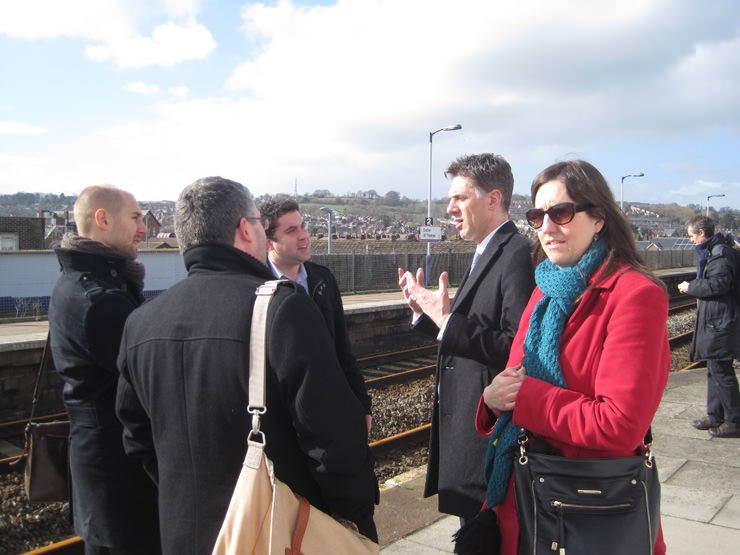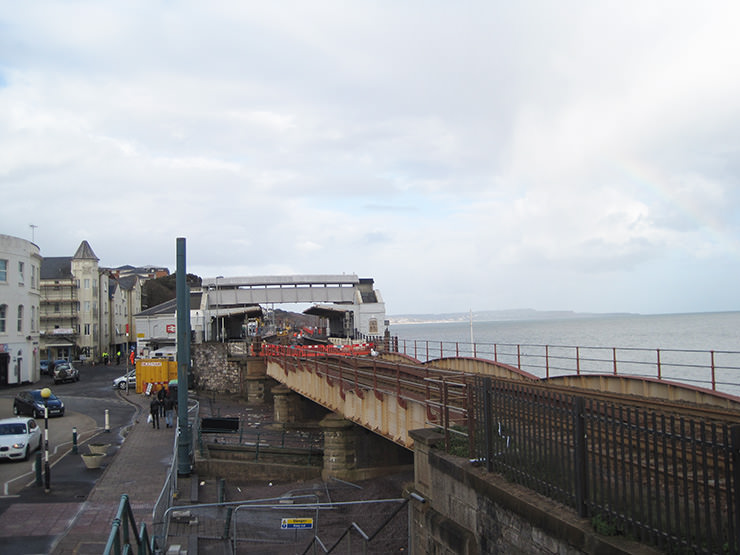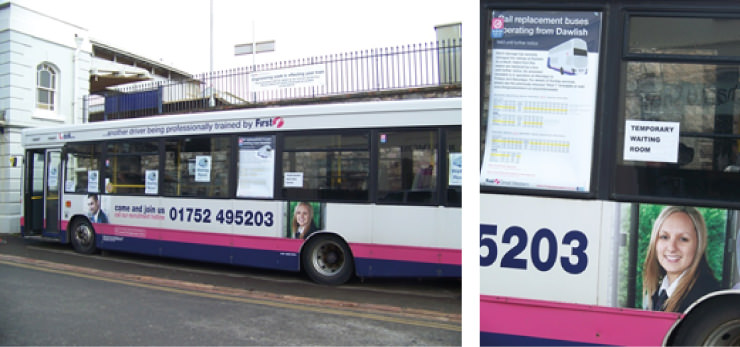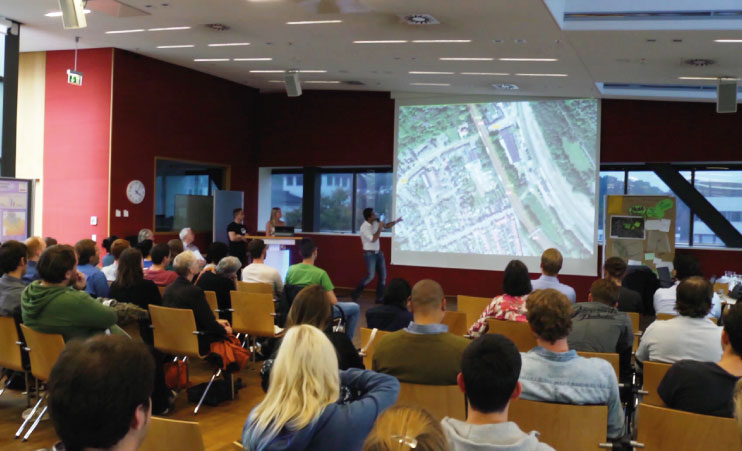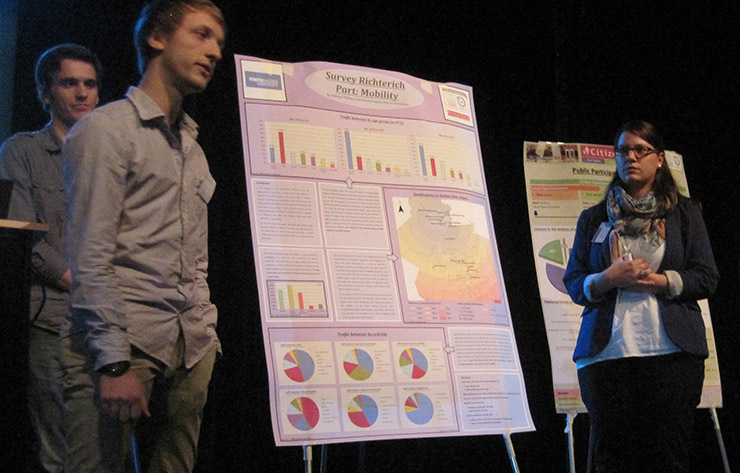One of the German members of Citizens’ Rail’s academic team enjoyed an action-packed visit last week to research the UK’s community rail sector.
[divider type=”default” vspace=”20px” hspace=”0%” /]
Fresh from his presentation to the International Geographers’ Union in Krakow, Dominik Elsmann from RWTH Aachen University (pictured left above, with Richard Burningham of the Devon & Cornwall Rail Partnership) visited the UK to interview a range of experienced figures from the country’s long-standing community rail sector.
The research will help to inform his PhD on “Regional railway governance”, with a specific focus on participatory approaches. In this context he will compare two case study regions in Germany and Great Britain.
Also as part of the trip, Dominik joined the Devon & Cornwall Rail Partnership at their local conference – giving the opportunity to hear from speakers from the rail industry, local authorities and the community rail sector. The conference was preceded by a social evening for early attendees. This included a “music train” on the Tamar Valley line (pictured), enjoyed by delegates and local passengers alike.
As the final part of the visit, a productive planning meeting with the Devon & Cornwall Rail Partnership was held. This focused on the relationship and links between Citizens’ Rail’s academic evaluation, and the project’s practitioner toolkit – a free resource being developed to help rail professionals and others to get local communities more involved in their local and regional railways.
